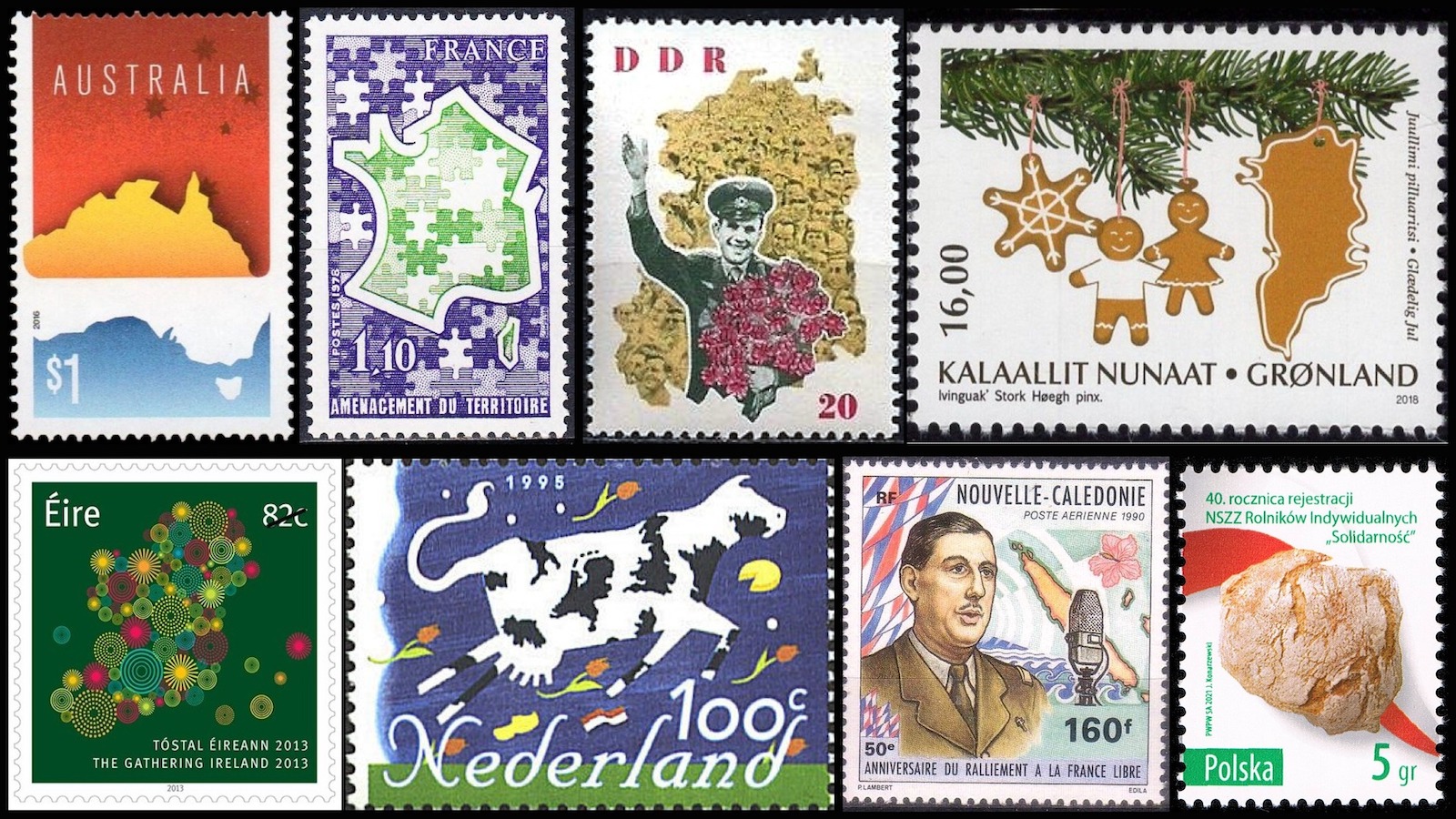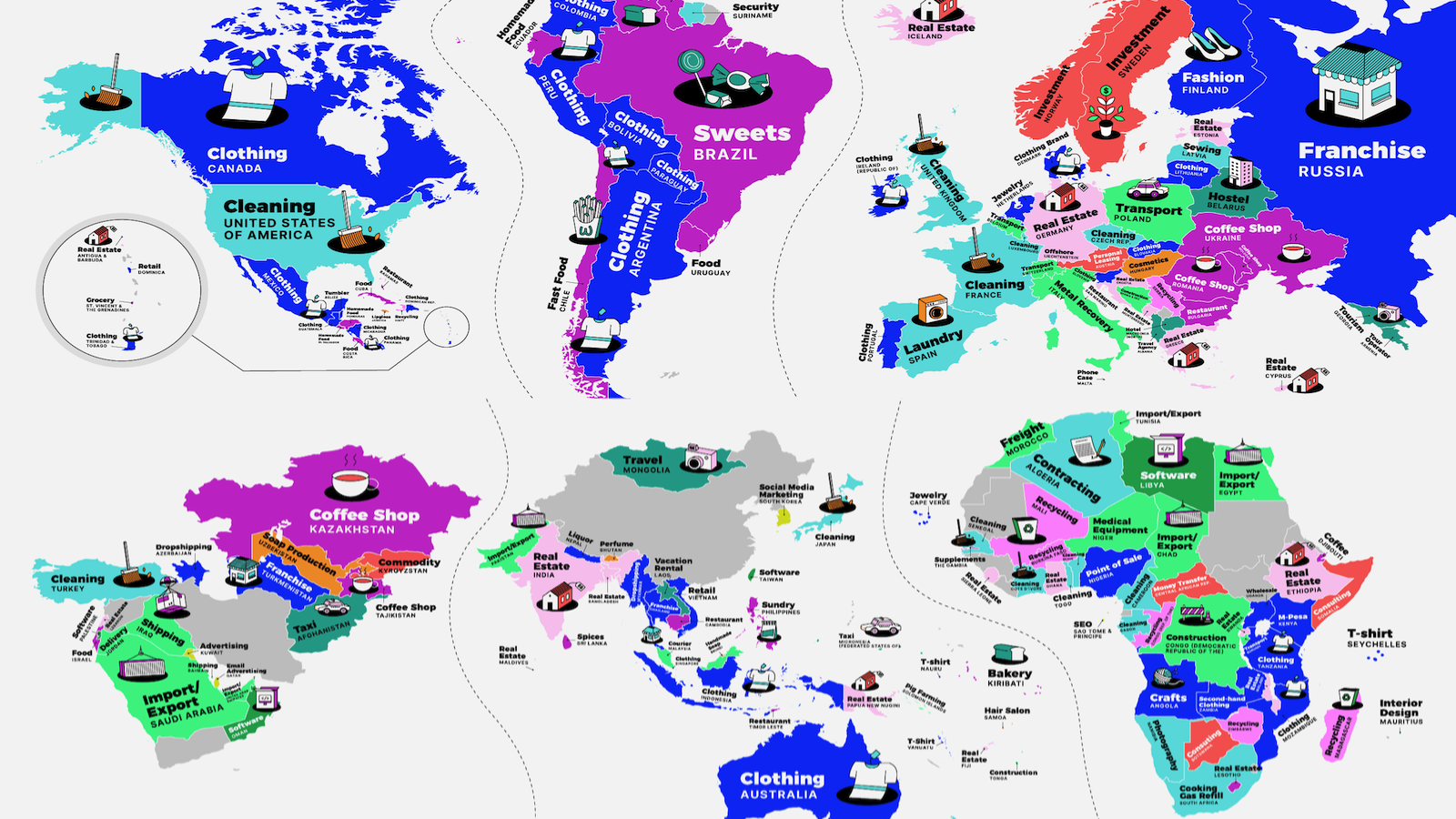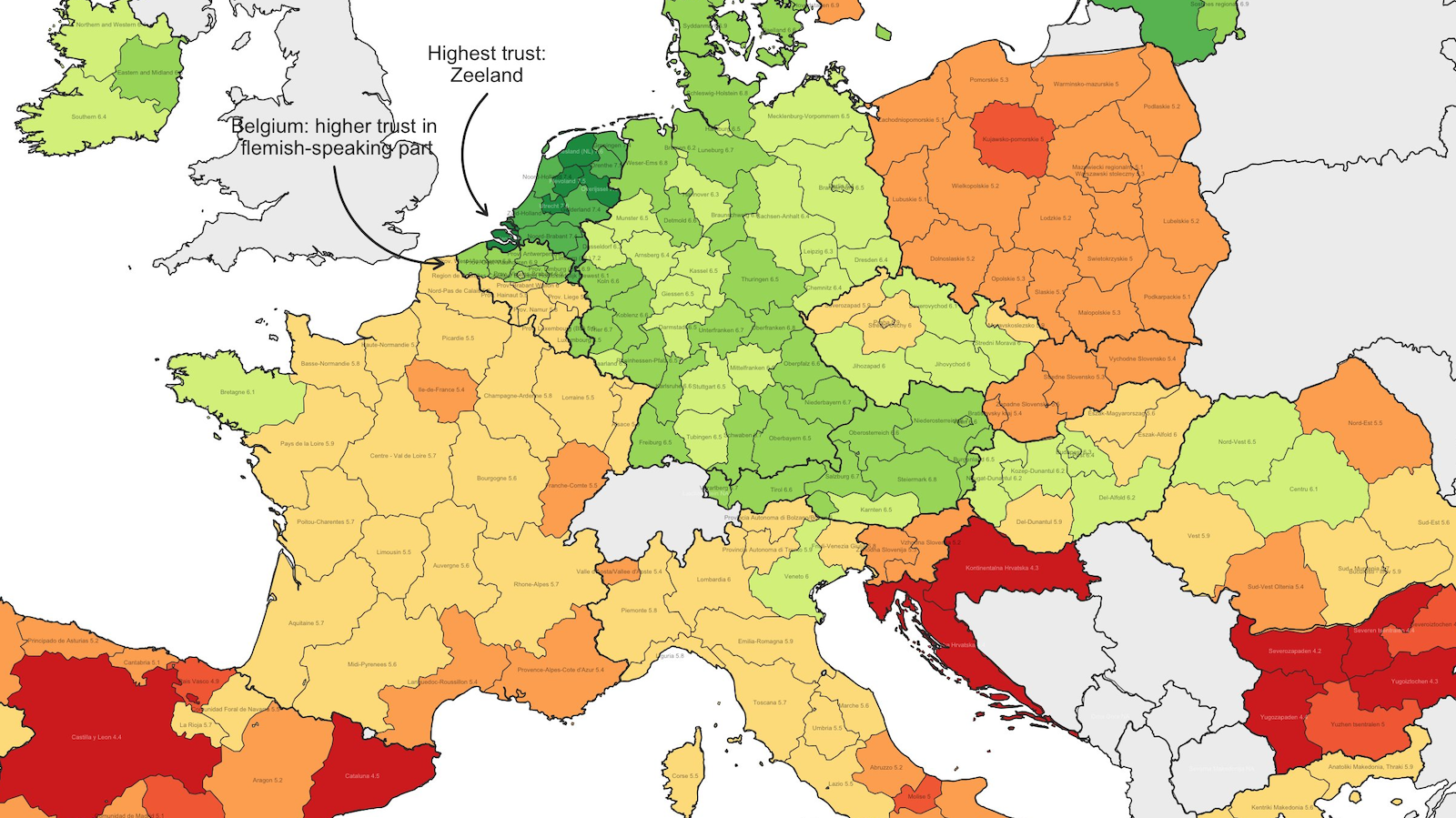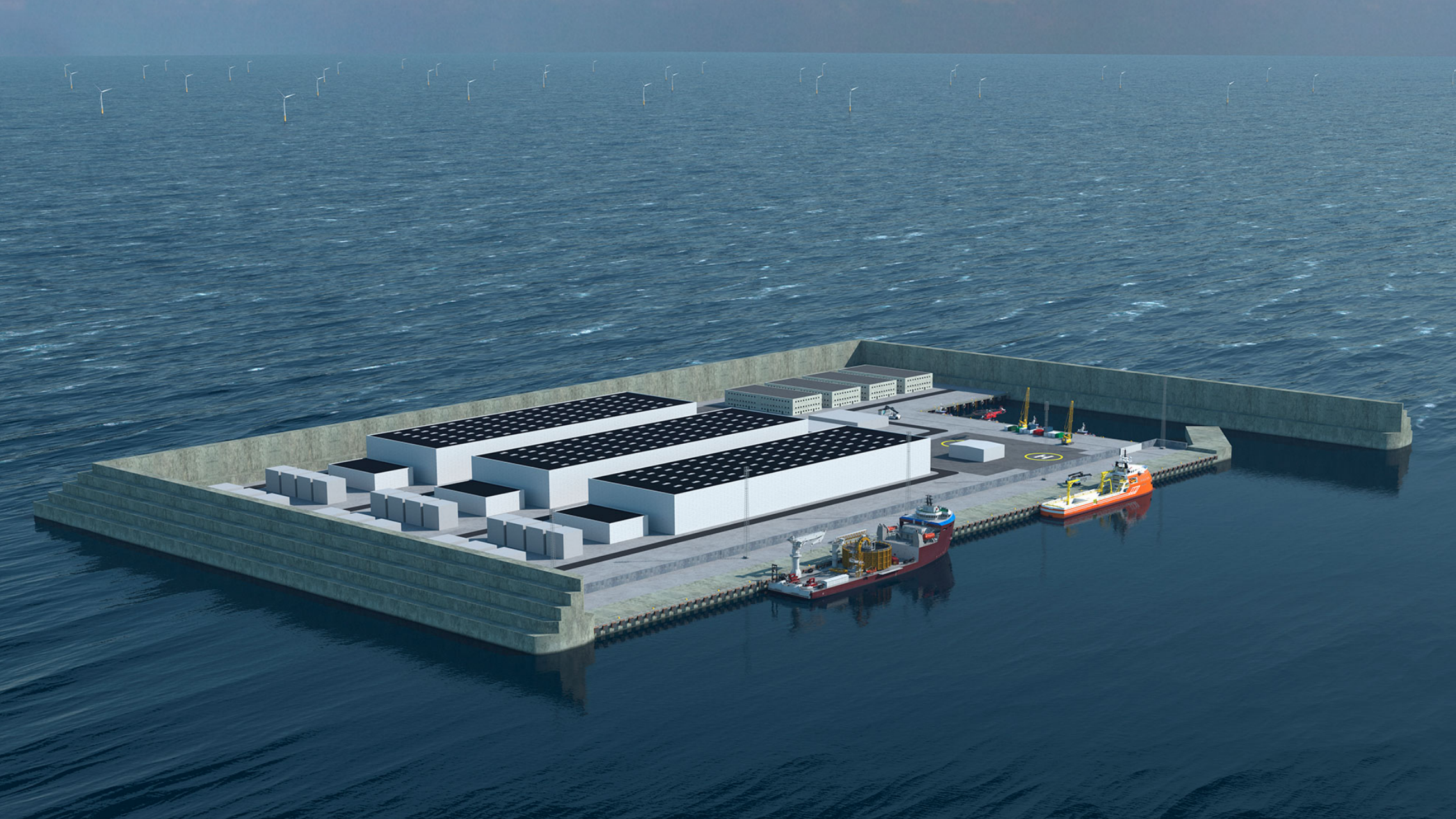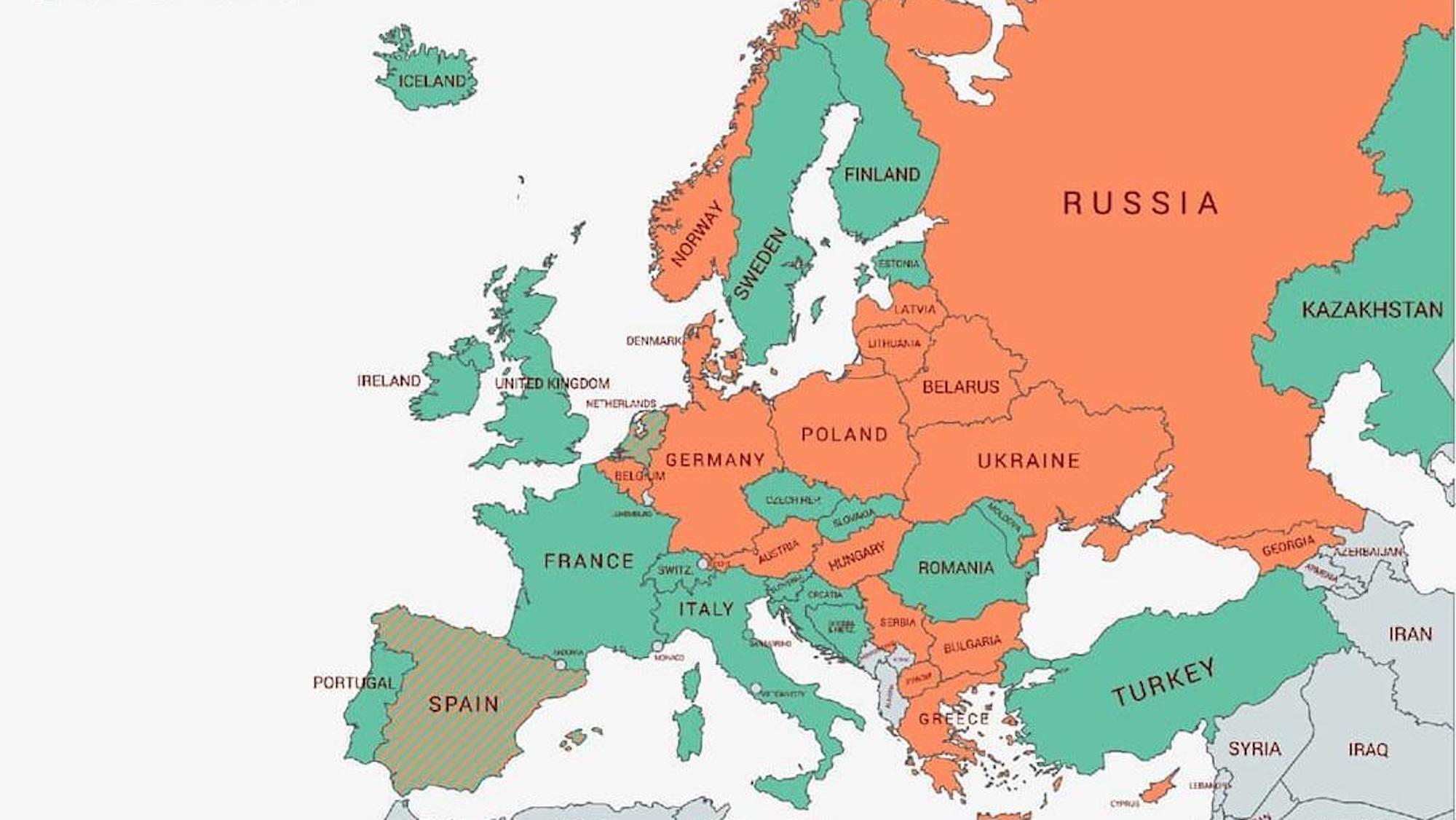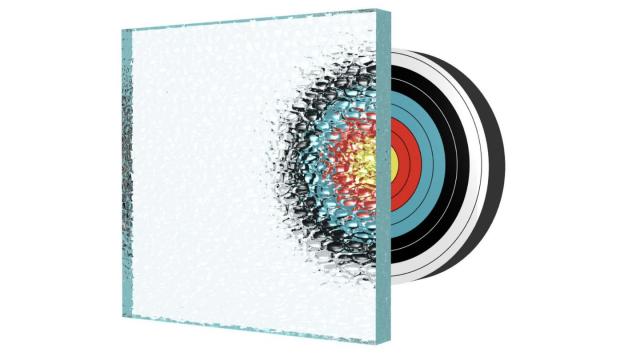Where in the world is Portsea?
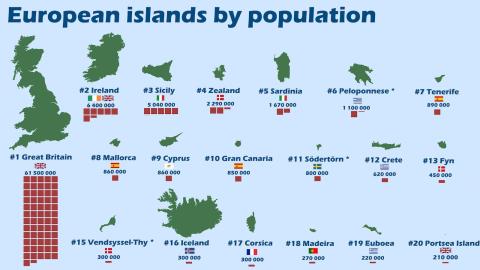
Credit: TinySamurai
- Great Britain (pop. 61.5 million) is Europe’s most populous island.
- But where exactly is Portsea, number 20 on the list?
- If you’re not afraid of a truckload of trivia – read on.

The opera house in Palermo, the capital of Sicily – Europe’s third-most populous island. Credit: Miguel MEDINA/AFP via Getty Images
Maps are rabbit holes. Where they lead depends on how you fall into them. In this case, the trap door was Portsea.
This is a map of Europe’s 20 most populous islands. The largest ones are familiar, and not difficult to guess. Yes, Great Britain is Europe’s most people-rich island. And many would have gotten number two right as well: Ireland.
As the ranking continues, familiar islands alternate with less familiar ones, and it’s interesting to see how some smaller or more obscure ones out-populate others, larger and better known. Spanish island Mallorca has the edge over Cyprus, even though the latter is an entire nation unto itself. And Vendsyssel-Thy, arguably Denmark’s least familiar larger island, may be a lot smaller than Iceland but it has slightly more inhabitants.
The kicker, though, is the island at the end of the ranking. Portsea. Never heard of. Is that some kind of magical place that appears only once every century? (No, that’s Brigadoon). So we looked it up. But hunting for a single piece of information is like buying a single piece of candy. It can’t be done.
Here you have it, then: a truckload of trivia, on Sardinia’s black-clad female assassins, a gothic cathedral that faces Mecca, and the tragic fate of Corsica’s first and last-but-one king.
Not that there’s much else to do during lockdown, but in the time it took us to gather all this info, we could have learned a really easy language or acquired a fairly dumb skill. Thanks a lot, Portsea!

A Top 20 of Europe’s most populous islands.Credit: TinySamurai
1. Great Britain: 61.5 million
- Great Britain is not just Europe’s most populous island (and the third-most populous in the world, after Java, Indonesia and Honshu, Japan), it is also the continent’s largest (and the world’s ninth-largest).
- There are two explanations for how Britain got the prefix ‘Great’. In his Almagest, second-century geographer Ptolemy differentiated between the islands of Great Britain and Little Britain, by which he meant Ireland. In his Historia Regum Britanniae however, 12th-century historian Geoffrey of Monmouth distinguished between Britannia major and Britannia minor, by which he meant Brittany, the now-French region on the European mainland.
- Although the terms are often used interchangeably, Great Britain is not the same as the United Kingdom (which consists of Great Britain and Northern Ireland). However, the terms were synonymous between the Acts of Union of 1707 (uniting England and Scotland) and of 1800 (between Great Britain and Ireland).
- The four countries of the British Isles are closely identified with their patron saints: St George for England, St David for Wales, St Andrew for Scotland and St Patrick for Ireland. Strangely, the island of Great Britain itself has no patron saint. In the past, St Alban–the first-recorded Christian martyr (a.k.a. protomartyr) on the island–had this role. More recently, St Aidan, an early Irish apostle to the Britons, has been proposed.
2. Ireland: 6.4 million
- The most iconic Irish beverage is Guinness, but the Irish are only the second-largest consumers of the famed Black Stuff; in first place are… the Brits. The next-biggest markets are Nigeria, the U.S., and Cameroon. In all, about 4 million of the 10 million glasses of Guinness consumed daily are downed in Africa.
- Whitefriar Street Carmelite Church in Dublin contains a shrine with the relics of St Valentine, donated by Pope Gregory XVI in 1836. It’s a popular destination for couples to ask the saint to bless their life together.
3. Sicily (Italy): 5 million
- Sicily is the biggest island in the Mediterranean, and home to Europe’s tallest active volcano, Mount Etna. That’s the one hogging the limelight; there are at least 10 other volcanoes on or near Sicily, including two active ones – Stromboli and Vulcano (in English: Vulcan). Each is one of the Aeolian Islands, just north of Sicily. The Romans believed the fire-spewing mountain was the chimney of their fire god Vulcan’s smithy, hence the latter island’s name, which became the generic term for ‘fire-spewing mountain’.
- Three Sicilian firsts: it was where pi was first calculated (in the 3rd century BC, by Archimedes), where the first sonnet was written (in the 13th century, by Giacomo da Lentini), and where ice cream was invented (in the 17th century, by Francesco Procopio dei Coltelli).

The MS Turanor PlanetSolar, the world’s largest solar-powered boat, squeezes through the Corinth Canal, which turned the Peloponnese into an island. Credit: VALERIE GACHE/AFP via Getty Images
4. Zealand (Denmark): 2.3 million
- Zealand (in Danish: Sjælland) is the largest island of Denmark proper and the most populated, home to the capital Copenhagen and other major cities.
- It is home to the oldest and second-oldest amusement parks in the world still in operation, called Bakken and Tivoli, respectively.
- Despite the similarity, Zealand is not the toponymic parent of New Zealand; the antipodean nation was named after the Dutch province of Zeeland.
5. Sardinia (Italy): 1.7 million
Of the three larger islands in the western Mediterranean, Sardinia somehow always gets the least attention. Quite undeservedly so, because beaches, nature, old buildings. Etcetera, of course. Here, however, are three standout facts that are truly unique about the island.
- Sardinia contains the first of five ‘Blue Zones’ discovered across the world, where life expectancy is exceptionally high. The area has about 10 times more centenarians per capita than the U.S. One village called Seulo (pop. 750) has had 20 centenarians in the 20 years preceding 2016, a world record.
- The island’s penchant for longevity is actually quite surprising, considering another Sardinian tradition, the Femmina Accabadora, or ‘Finishing Woman’. If someone suffered from an intolerably painful illness, they (or their family) could request a visit from one of these folk euthanizers. Dressed in black and with covered faces, they would dispatch their victims swiftly and painlessly by suffocating them with a pillow, hitting them over the head with a heavy wooden hammer, or strangling them with the victim’s neck between their legs.
- The capital of Argentina was named after a hill in Sardinia. Bonaria (Italian for ‘good air’, or ‘fair wind’) is the name of a hill overlooking Cagliari, as it was free from the foul smell prevalent in the Sardinian capital’s swamp-adjacent old town. On top of the hill stands an abbey dedicated to the Virgin Mary, who was venerated by sailors praying for fair winds. The first Spanish sailors to land where the Argentinian capital now stands, gave thanks to her, and Our Lady of Buen Ayre eventually gave her name to the city.
6. Peloponnese (Greece): 1.1 million
In 67 AD, the emperor Nero broke ground on a canal to connect the Ionian and Aegean seas. He wielded a pickaxe and personally carried away the first basket of soil. The mean fiddler then handed over to 6,000 Jewish prisoners of war, who managed to dig across one-tenth of the narrow Istmus of Corinth before the project was abandoned.
Only in 1893 was the Corinth Canal completed – finally separating the Peloponnese from the Greek mainland, turning the peninsula into Greece’s largest island. The canal is 6.4 km (4 mi) long and just 21.4 m (70 ft) wide, making it impassable for large ships. It has little economic value and is mainly a tourist attraction. 7. Tenerife (Spain): 890,000
Next time you’re in Trafalgar Square in London, look up at the statue on top of Nelson’s Column: it has no right arm. Next time you’re in Tenerife, you can go see the cannon what did it. In the remains of the Castle of San Cristobal, now a museum, in the capital Santa Cruz, you’ll find El Tigre, a 3-m-long bronze cannon cast in Seville. This is the weapon that wounded Horatio Nelson during the Battle of Santa Cruz de Tenerife in 1797. Each year on July 25th, Tenerife stages a full-costume re-enactment of the battle. Each year, Nelson loses both the battle and the arm. That’s why it’s not called Tenerife Square!

Berengaria, wife of king Richard I Lionheart. Credit: Kean Collection/Getty Images
8. Mallorca (Spain): 860,000
Palma de Mallorca’s Gothic cathedral, known as La Seu, has one of the world’s largest stained-glass windows. Famous architect Antoni Gaudí is responsible for some of the more recent restorations. The iconic building has one even more unique peculiarity. Whereas Christian churches generally face east, this one points towards Mecca. That’s because it rises on the foundations of a mosque, which was built when the Moors also ruled this part of Spain.
9. Cyprus: 860,000
- Cyprus is the only place outside Britain ever to stage an English royal wedding. On May 12, 1191 in Limassol’s Chapel of St George, King Richard I (‘Lionheart’) married princess Berengaria, daughter of King Sancho VI of Navarre. From there, the newlyweds proceeded to the Holy Land for a bit of light crusading.
- Present-day Cyprus is the only country in the world with a divided capital. The northern part of Nicosia is run by the Turkish Republic of Northern Cyprus, a country recognised only by Turkey. The southern part of Nicosia is run by the Republic of Cyprus, an EU member state. The two sides are separated by a UN-administered Green Line, which divides not just Nicosia, but the entire island.
10. Gran Canaria (Spain): 850,000
- Neither Gran Canaria nor the Canary Islands as a whole were named after canary birds. It’s rather the other way around: the birds derive their names from the islands, where they are endemic.
- The islands were in fact named after dogs. Insulae canariae is Latin for ‘Islands of the Dogs’. But it’s rather unclear how the name came about.
- One theory is that large dogs roamed the islands when the Ancients first visited (Pliny the Elder mentions this).
- Another theory claims the ‘dogs’ are in fact ‘sea dogs’, i.e. seals.
- Or: the native Guanche people worshipped and mummified dogs, a practice perhaps related to the cult of the dog-headed god Anubis in Egypt.
- Canarians have made their mark on the Americas. They founded the cities of San Antonio in Texas, and Sao Paulo in Brazil, among others. And they brought over the peppers, chilis, and salsas familiar in Tex-Mex cuisine.
- In 1936, Francisco Franco was General Commandant of the Canaries, stationed in Las Palmas, on Gran Canaria. This is where he plotted his insurgency against the left-wing Republican government. So you could say that the Spanish Civil War started on Gran Canaria.
11. Södertörn: 800,000
Södertörn is a vaguely triangular peninsula south of Stockholm, separated from the mainland by canals cut at Södertälje and Hammarby. Since 2014, it has been reclassified as an island and is now considered Sweden’s third-largest island, after Gotland and Öland. The northern part of the island is a heavily populated southern extension of the Swedish capital region.

Pete Buttigieg, currently the most prominent Maltese-American. Credit: Stefani Reynolds – Pool/Getty Images
12. Crete (Greece): 620,000
Cretans take their salads seriously. In 2010, the Guinness-attested world record for largest Greek salad ever was set in Ierapetra, Crete. The salad weighed in at 13 tons and 417 kg.
Unfortunately for Ierapetra, the record was broken in 2016, on Moscow’s Red Square of all places, where no less than 1,200 volunteers prepared a Greek salad weighing 20 tons.
But if you can take the record-breaking salad out of Crete, you can’t take the Cretans out of the record-breaking salad. So to speak. The Muscovite Greek salad was prepared under the direction of Petros Lambrinidis, a chef from Crete.
13. Fyn (Denmark): 450,000
Fyn, in between Zealand and Jutland, is Denmark’s third-largest island. In English, it’s known as Funen. (The Latin name is Fionia).
The New Little Belt Bridge (Ny Lillebæltsbro, 1970), connecting Fyn with Jutland, is Denmark’s oldest suspension bridge.
Since 1997, Fyn and Zealand are linked via the Great Belt Fixed Link (Storebæltsforbindelsen), a combination of road bridge and rail tunnel and bridge. The eastern part of the bridge is formed by a 2,694m long suspension bridge, the longest such bridge in Europe (and the third-longest in the world).
14. Malta: 400,000
On the campaign trail last year, Pete Buttigieg joked that he was the only “left-handed Maltese-American, Episcopalian, gay, millennial war veteran in the race.” A pretty impressive rainbow coalition, but not one broad enough to earn him the Democratic nomination.
Nevermind: as Joe Biden’s pick for U.S. Secretary of Transportation, Buttigieg may yet remain the nation’s most prominent public figure of Maltese descent. Unless Britney Spears makes a comeback, that is.
Yes, the Princess of Pop–a month and a half older than Buttigieg, by the way–also has Maltese ancestry, albeit only one-eighth, via her mother. But that’s okay: the Maltese are an inclusive people, happy to celebrate anyone with as much as a drop of Maltese blood.
Other prominent Maltesers? Actor Jason Bateman, Canadian rocker Bryan Adams, U.S.-British royal Meghan Markle, and Scottish singer Sharleen Spiteri.
15. Vendsyssel-Thy (Denmark): 300,000
What’s the northernmost island of Denmark proper, and the second-largest Danish island after Greenland? Quite a few Danes won’t know the right answer either. It’s Vendsyssel-Thy, the northernmost part of Jutland.
It doesn’t feel like an island, perhaps because it consists of distinct regions (Vendsyssel, Thy and Hanherred), and its name derives from those parts rather than reflects its geographic distinctiveness (see also the Delmarva Peninsula in the U.S., the name of which derives from DELaware, MARyland and VirginiA).
Or perhaps because it hasn’t been one for very long. Only after the disastrous Great Hallig Flood of February 1825 breached Agger Tange, the land link that separated the North Sea from the Limfjord, did it become entirely detached from the rest of Jutland.
The first part of the name Vendsyssel, by the way, may refer to the Germanic tribe of the Vandals.
16. Iceland: 300,000
Iceland is a country of extremes. Of, if you’re into lists, ‘Best Ofs’. Here’s our personal Top 10.
- Reykjavik is the northernmost national capital in the world.
- Around 11 percent of the country is covered by glaciers, 8 percent alone by Vatnajökull, the world’s largest glacier outside the polar regions.
- Iceland’s parliament is called the Althingi. It was founded in 930, making it the oldest one in the world.
- About two-thirds of children in Iceland are born outside of marriage, the highest rate in the world.
- In 2009, Jóhanna Sigurðardóttir became Iceland’s first female Prime Minister and the world’s first openly lesbian head of government.
- About 30 percent of Iceland’s electricity is of geothermal origin, the highest percentage in the world.
- Iceland is the only country in the world without mosquitoes.
- According to the Global Peace Index, Iceland is the most peaceful country in the world.
- Iceland has the world’s smallest overall gender gap, a position it has held since 2009. The pay gap is decreasing, but so slow that parity would be reached only in 2068.
- In a recent survey of 35 countries worldwide, Iceland came out as the best place in the world to raise a family. The U.S., incidentally, finished 34th.

The Spinnaker Tower, the icon of Portsmouth, and by extension also the most famous landmark of Portsea.Credit: Finnbarr Webster/Getty Images
17. Corsica (France): 300,000
The first king of Corsica is buried in the churchyard of St Anne’s in Soho, London. Theodor von Neuhoff (1694-1756) was a German-born adventurer who helped Corsican rebels rid the island of the Genoese, but only for about eight months in 1736. The last 20 years of his life, he vainly tried to regain his throne. ‘Theodor the First’ was got out of debtors’ prison in London, by signing over his elusive kingdom to his creditors. His epitaph, written by his friend Sir Horace Walpole, reads:
The grave, great teacher, to a level brings
Heroes and beggars, galley slaves and kings.
But Theodore this moral learn’d ere dead:
Fate poured its lessons on his living head,
Bestow’d a kingdom, and denied him bread.
In 1768, Genoa sold the rebellious island to France. In 1794, the British conquered the island and established a short-lived Anglo-Corsican Kingdom, making George III the second (and last) king of Corsica. Two years later, the French were back – for good, for now.
18. Madeira (Portugal): 270,000
- The Portuguese island of Madeira–closer to Africa than to Europe–is famous for the fortified wine that carries its name. The Founding Fathers in particular were big fans. Madeira wine was used to toast the signing of the Declaration of Independence, the inauguration of George Washington, the launch of the U.S.S. Constitution, and the signing of the Louisiana Purchase.
- Madeira’s second-most consequential contribution to global culture is the ukulele. Although now entirely associated with Hawaiian music, the instrument (whose name means ‘jumping flea’ in Hawaiian) was introduced to the islands only in 1879, by Madeiran sugar cane cutters. It is based on similar small guitar-like instruments they knew from home, such as the cavaquinho and the rajao.
- Soccer fans will beg to differ. They would argue that Madeira’s most famous export is Cristiano Ronaldo, hailed by many as the greatest soccer player of his generation. Local authorities seem to agree. In 2017, the capital Funchal’s airport was renamed Cristiano Ronaldo International Airport.
19. Euboea (Greece): 220,000
‘Euboea’ means ‘land of the well-fed oxen’, but throughout history, it’s had more aliases than that shifty-looking character on the next street corner.
In ancient times, it was known as Dolicche or Macris (because it is so narrow), and Aonia, Ellopia or Abantis (after the tribes that called it home). The Byzantines called it Chalcis (the name of its capital) or Euripios (after the strait that separates it from the mainland). Under Venetian rule, it was known as Negroponte (a folk etymology, after the ‘black bridge’ across the strait).
One of the most notable natives of the island is St Porphyrios (1906-91), a Greek Orthodox monk famous for his gift of clairvoyance, which he called ‘spiritual television’.
20. Portsea Island (UK): 210,000
Portsea is the third most populated of the British Isles, after Great Britain and Ireland. And the most densely populated one. Yet you’ve probably never heard of it. That’s because Portsea is subsumed by the city of Portsmouth, which covers the entire island.
Portsmouth often calls itself the only island city in Britain. But that’s not entirely true, as the city also covers an adjacent part of the mainland, on the southern coast of England.
Map seen here on Reddit. Reproduced with kind permission.
Strange Maps #1066
Got a strange map? Let me know at [email protected].
